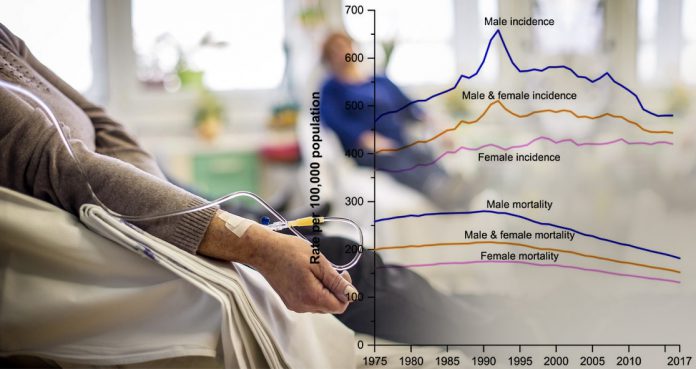On Wednesday, the American Cancer Society (ACS) reported that the nation’s cancer mortality rate fell by 2.2. percent between 2016 and 2017, which is the largest one-year decline ever.
Overall, the cancer death rate in the United States has dropped by 29 percent since 1991, which means nearly 3 million cancer deaths would have occurred if the mortality rate had remained constant.
The report was published online in CA: A Cancer Journal for Clinicians.
Lead author of the ACS’s report Rebecca Siegel said, “Every year that we see a decline in cancer mortality rate, it’s very good news.”
Experts said that the decline in the cancer mortality rate could be due to the reduced smoking rates and advancements in lung cancer treatment. In addition, there have been new treatments for melanoma, a type of skin cancer, which helped increase the survival rates by preventing metastasis.
However, progress has slowed down for breast, prostate, and colorectal cancers, which could be due to the rising obesity rates in the United States.
According to the ACS prediction, there will be more than 1,806,590 new cases of cancers and 606,520 cancer deaths in 2020.
Lung cancer has been the number one killer than other cancers.
Oncologist Dr. Otis Brawley at Johns Hopkins University said, “We are still dealing with the effects of cigarette smoking from the 1960s and 70s in today’s population.”
“Because there is a lag between exposure and cancer diagnosis, people who stopped smoking may develop lung cancer years later but these rates should continue to go down,” added Dr. Brawley.
Advancements in diagnosing and treating lung cancer have helped many patients to survive in the last decade. Also, new less invasive procedures seem to speed up recovery times.
Similar advancements have been made when it comes to diagnosing and treating melanoma. The FDA approved two new drugs, ipilimumab and vemurafenib, for metastatic melanoma in 2011. Since then, cancer deaths from melanoma started to decline by 7 percent.
Siegel said, “That was the largest decline in cancer mortality that we saw and what made it so dramatic is that for people 65 and older, melanoma mortality rates were actually increasing in the 2000s.” However, the rate of cancers related to obesity has been increasing, for instance, colon and rectal cancers.





















